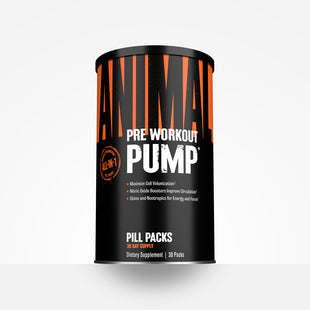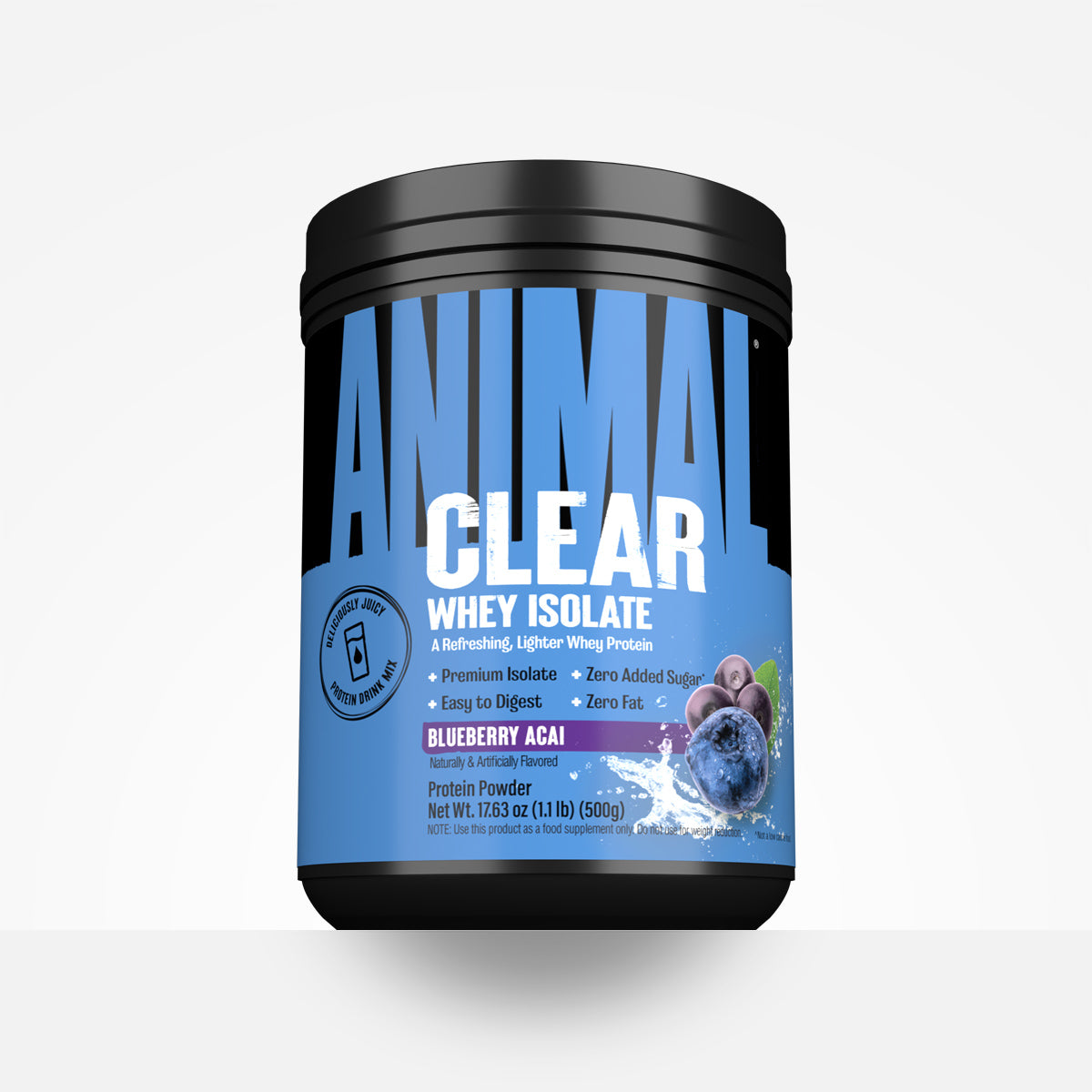If you've spent enough time under the bar, you know the best pump isn’t just about looking bigger in the mirror.
It’s a signal—your body’s way of telling you everything is moving in the right direction: Blood is flowing, nutrients are being delivered, muscles are working, and growth is being triggered.
A great pump isn’t an accident. It’s a physiological tool you can use to maximize performance, drive recovery, and accelerate muscle growth—if you know how to tap into it the right way.
Today's research, and decades of results in the gym, show that the pump is one of the most powerful indicators that you're not just training harder, but smarter.
Here’s why the pump matters—and how it lays the groundwork for serious gains.
1. The Pump is a Gateway to Better Blood Flow and Oxygen Delivery
At its core, the pump is about enhancing hemodynamics—the delivery of blood, oxygen, and nutrients into the muscle during training.
When blood flow increases, it:
- Delivers oxygen to improve endurance and delay fatigue¹
- Transports amino acids and glucose faster to fuel performance and kickstart recovery²
- Supports the removal of waste products like carbon dioxide and lactate that build up under heavy loads³
Techniques like blood flow restriction (BFR) further prove the power of blood pooling: Research shows BFR can trigger similar hypertrophy and strength gains at just 30% of your 1-rep max.⁴
Bottom line: The bigger and longer you sustain your pump, the better your muscles are fed—and the better your results.
2. Pumps Trigger Key Muscle Growth Pathways
The stretch and pressure you feel during a pump isn’t just satisfying—it directly activates muscle-building pathways inside your body.
Newer studies show that:
- Cell swelling triggers mTOR activation—the master regulator of muscle protein synthesis⁵
- It simultaneously reduces muscle protein breakdown, shifting the balance toward anabolism⁶
- Muscle mechanosensors are activated by swelling and stretch, signaling hypertrophy adaptations⁷
In simple terms: A bigger pump amplifies the growth signal to your muscles, driving long-term gains in size and strength.
3. Pumps Enhance Recovery and Reduce Fatigue
A true pump doesn’t just make your muscles look full during the workout—it helps them recover better afterward.
When blood is flooding the muscles:
- Lactate and hydrogen ions (that cause fatigue and soreness) are cleared more efficiently⁸
- Anti-inflammatory compounds and immune cells are delivered faster to muscle fibers⁹
- Glycogen stores are replenished more quickly, which is critical for training again at a high level the next day¹⁰
More blood flow now means less soreness tomorrow and better training consistency over time.
4. The Pump Supports Connective Tissue Health and Resilience
Your pump isn’t just helping your muscles—it’s strengthening everything around them too.
Recent research shows that:
- Increased blood flow improves collagen turnover in tendons and ligaments¹¹
- Targeted pump work can stimulate new capillary growth, helping support joint health and durability¹²
- Over time, enhanced perfusion can help prevent common overuse injuries
If you want to stay strong and stay in the game longer, targeting blood flow isn’t optional—it’s necessary.
5. The Psychological Edge of the Pump
The physical pump creates a mental shift that’s just as important.
Modern neuroscience confirms:
- A great pump increases endorphin and dopamine release, improving mood and motivation¹³
- These brain chemical surges reinforce goal-driven behavior—meaning the better you feel after a session, the more likely you are to keep training¹⁴
The pump gives you visual proof of your work and emotional momentum to keep grinding.
How Animal Pump Non-Stim Helps You Capitalize on the Pump — And Perform Beyond It
Everything we've covered — blood flow, nutrient delivery, cellular swelling, recovery, connective tissue health, mental drive — all depends on how well you can trigger and sustain a pump during your training.
That’s where Animal Pump Non-Stim comes in.
We built it with clinically backed ingredients to help you not just chase a pump, but use it as a tool to push strength, endurance, recovery, and growth.
Here’s how it ties together:
- 6g Citrulline — Shown to increase nitric oxide, boost reps to failure by 52.9%, and enhance muscular endurance¹⁶
- 1.5g Nitrosigine® — Clinically shown to increase blood flow within 15 minutes and sustain elevated nitric oxide levels for up to 6 hours, boost muscle volume by 2.3x, and enhance cognitive function under fatigue for sharper focus and endurance throughout your session¹⁷¹⁸
- 2.5g Betaine Anhydrous — Increases strength and power output by up to 20% while supporting lean mass gains¹⁹
- 3.2g Beta-Alanine — Delays fatigue, allowing for greater total training volume — a major driver of hypertrophy²⁰
- Full-Spectrum Electrolytes — Help maintain cell hydration and fullness, preventing performance drop-off from dehydration
Every ingredient supports better blood flow, stronger muscle contractions, greater endurance, and faster recovery — everything you need to not just feel the pump, but to build on it.
And because Animal Pump Non-Stim is stimfree, you have total flexibility:
- Stack it with a stim-based pre (like Animal Primal or Animal Fury)
- Use it solo for night sessions or anytime you want to go caffeine-free
- Or add it to pump-focused training blocks where blood flow and recovery are the priority
Animal Pump Non-Stim isn’t just about looking swole after your set.
It’s about training smarter, recovering faster, and building real, lasting muscle.
References:
- Ferguson BS, et al. Muscle perfusion and oxygen delivery during resistance exercise. Sports Med. 2022.
- Wolfe RR. Regulation of muscle protein by amino acids. J Nutr. 2002.
- Gladden LB. Lactate metabolism: a new paradigm. J Physiol. 2022.
- Scott BR, et al. Blood Flow Restriction Training. Front Physiol. 2021.
- Laplante M, Sabatini DM. mTOR signaling in growth control and disease. Cell. 2022.
- Hornberger TA, et al. Cell volume changes regulate skeletal muscle growth via mTOR activation. J Physiol. 2021.
- Wackerhage H, et al. Stimuli and sensors that initiate skeletal muscle hypertrophy. J Appl Physiol. 2023.
- Bangsbo J, et al. Lactate and H+ release from skeletal muscles during intense exercise. Am J Physiol. 1993.
- Peake JM, et al. Exercise-induced muscle damage and inflammation. J Appl Physiol. 2021.
- Ivy JL, et al. Muscle glycogen synthesis after exercise. J Appl Physiol. 2023.
- Magnusson SP, et al. The adaptability of tendon to loading differs in men and women. J Appl Physiol. 2023.
- Heinemeier KM, et al. Tendon tissue regeneration and healing. J Musculoskelet Neuronal Interact. 2022.
- Meeusen R, et al. Exercise and brain neurotransmission. Sports Med. 2022.
- Zschucke E, et al. Exercise and mental health. Psychiatr Clin North Am. 2021.
- Schwedhelm E, et al. L-Arginine and endothelial function. Clin Chem Lab Med. 2005.
- Pérez-Guisado J. Citrulline Malate Effects on Fatigue and Muscle Performance. J Strength Cond Res. 2010.
- Kalman DS, et al. Effects of Nitrosigine on Blood Flow and Cognitive Function. Nutrients. 2015.
- Bond SA, et al. Acute Effects of Nitrosigine on Cognitive Performance. Nutritional Neuroscience. 2016.
- Hoffman JR, et al. Effects of betaine supplementation on strength and power performance. J Strength Cond Res. 2009.
- Hobson RM, et al. Effects of beta-alanine supplementation on exercise performance. Amino Acids. 2012.






















